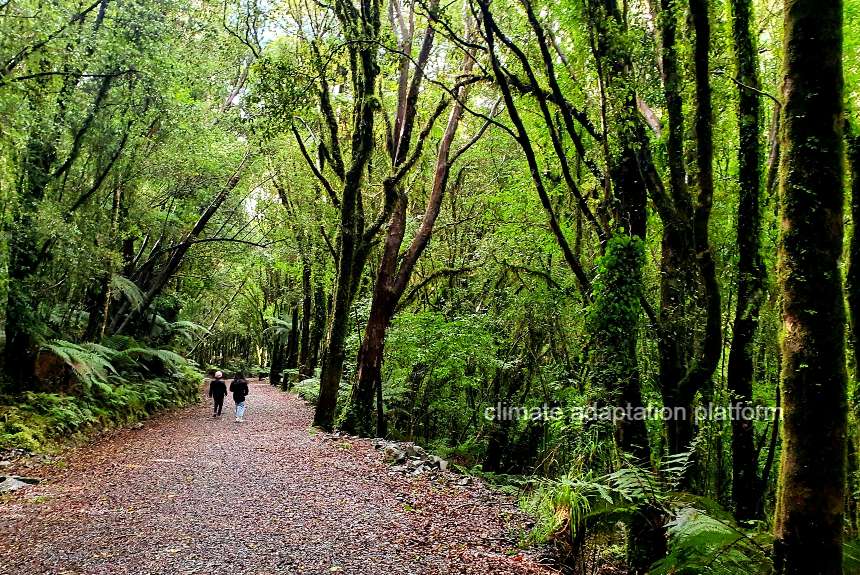Forestry is one of New Zealand’s highest-earning industries, drawing in $6.3 billion in 2021 in exports. It is the country’s third largest industry after dairy and meat and a significant source of employment, employing around 40,000 people.
Forests in the country play a critical role as a carbon sink and directly offset emissions. It is included in New Zealand’s emissions reduction plan as a key contributor to meeting its 2050 net zero targets and beyond.
Maximising the forest’s capacity to capture and store carbon, New Zealand efficiently plans to expand, diversify, and better utilise this renewable resource, according to the country’s Ministry for the Environment.
As much as forests are powerful carbon sinks and can help mitigate climate change, they are also facing significant threats from the climate crisis.
NZ Herald reports that forest fires and cyclones made more intense by climate change have caused significant destruction to forests in New Zealand. – The 2019 Pigeon Valley fire and the 2020 Lake Ōhau blaze have damaged vast areas of forests in the South Island, and more recently, Cyclone Gabrielle, in February 2023, did the same in North Islands forestry.
The staggering amounts of rainfall have caused several slips, sending tonnes of silt and slashing down the rivers, damaging critical infrastructures and properties.
Despite the climate-driven risks such as new pests, diseases due to the planet’s warming, extreme weather and wildfires, only a tiny percentage of New Zealand forest owners have implemented adaptive measures to increase climate resilience.
According to Scion, a New Zealand Forest Research Institute-led study, only 21% of forest growers have taken adaptive measures against climate change effects.
The study has surveyed 60 forest growers in New Zealand, representing 70% of the country’s plantation forests. Among the respondents, 30% are forest managers managing an average of 63,000 ha of plantation forests; 30% are sole forest owners, who own an average of 2,000 ha of managed forests; 23% are forest consultants; 12% have combined roles of forest owners, managers, and consultants; and the remaining 5% are farmers who planted trees on their farms and recently harvested their trees.
The study notes that perceptions of climate change, when individuals are concerned about climate change impacts, are more likely to implement climate adaptation strategies.
When respondents are asked about their perception of local climate change effects, just over half (56%) believe that climate change will affect their forest’s growth, 77% believe that climate change will increase the impact of pets and diseases, and 69% believes that wildfires will increase in frequency and severity. In contrast, around half (54%) do not believe climate change will reduce their forest growth and productivity.
Regarding the climate adaptation measures implemented by forest growers, 21% reported actions like applying a flexible harvesting schedule and planting tree species resistant to pests, wind, snow damage, and fire. To address specific risks, they take measures like market diversification to address market risk and biosecurity surveillance for managing pest and disease outbreaks, the study says.
The study also identified barriers and enablers to adaptations as perceived by respondents, and these include the lack of ability (65% of respondents), resources (51%), and motivation (60%), whereas 56% of the respondents strongly disagreed that they perceive themselves as climate deniers.
Those already implementing adaptive measures note that climate change research can help them improve their adaptation.
So, are New Zealand forest growers adapting to climate change? The authors say the answer is both yes and no. Of the respondents, 46% claimed that they have directly and indirectly taken measures to adapt their forests to climate change. Popular strategies include silvicultural responses (thinning operations and flexible harvesting) and diversification of tree species and markets.
Comparing New Zealand’s efforts with other countries, 20% of forest owners in Sweden applied climate adaptation measures, 47% in Portugal, and 54% in Germany.
Sources:
Morton, J. (2023, July 16). Climate change: Just two in 10 NZ forest owners taking ‘direct measures’ to adapt, study finds. NZ Herald. Retrieved from https://www.nzherald.co.nz/nz/climate-change-just-two-in-10-nz-forest-owners-taking-direct-measures-to-adapt-study-finds/KNORFYUL25GGJJB6FH32VJHSQI/
Villamor, G. B., Wakelin, S. J., & Clinton, P. W.. (2023). Climate change, risk perceptions and barriers to adaptation among forest growers in New Zealand. Journal of the Royal Society of New Zealand, 1–16. https://doi.org/10.1080/03036758.2023.2218103
Forestry in New Zealand. (n.d.) Forest Enterprises. Retrieved from https://www.forestenterprises.co.nz/why-invest-in-forestry/forestry-in-new-zealand/



Leave a Reply